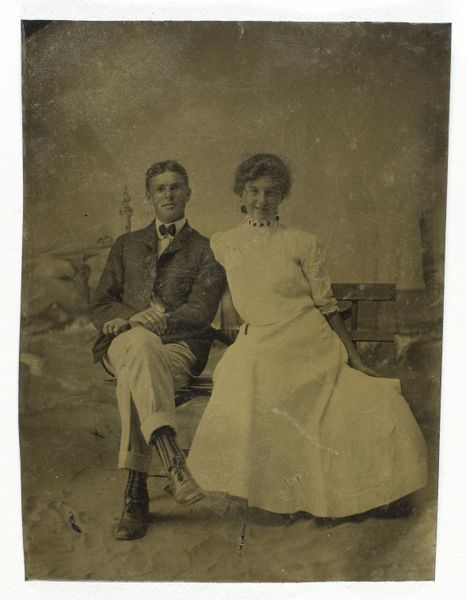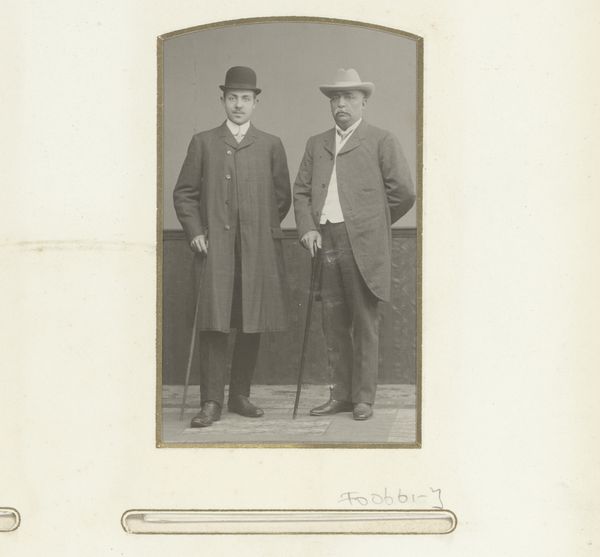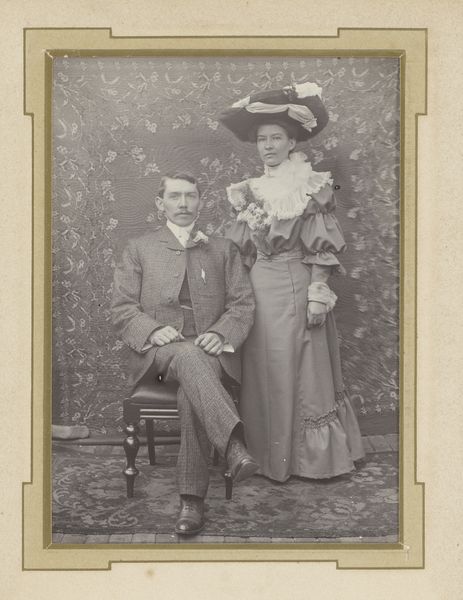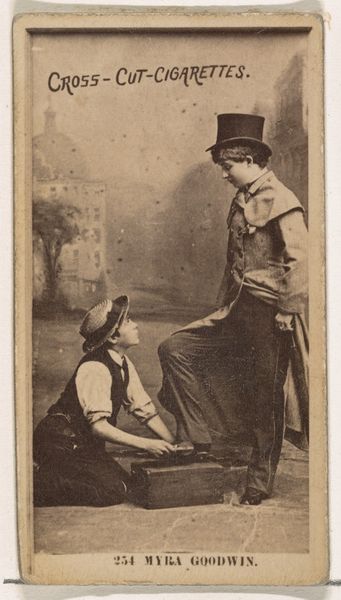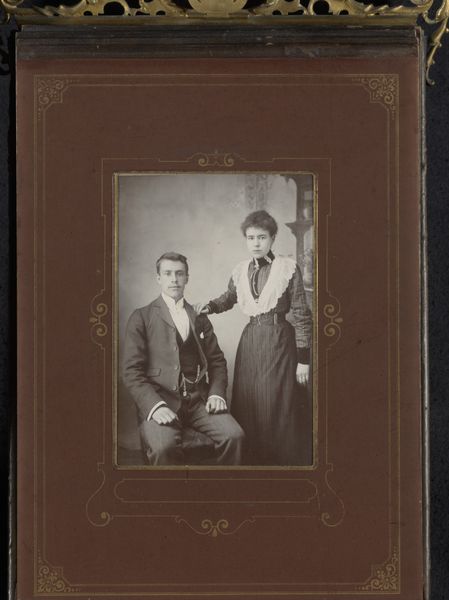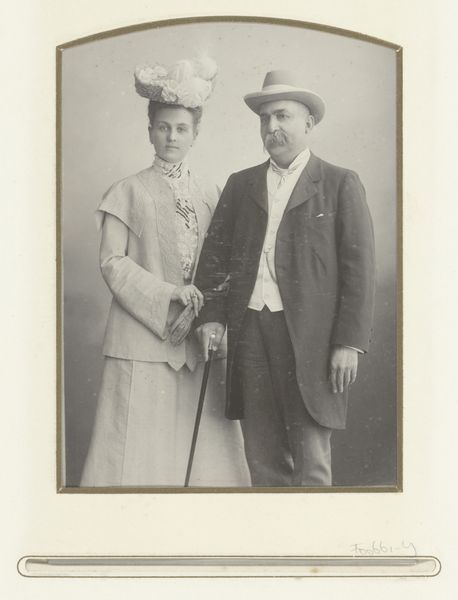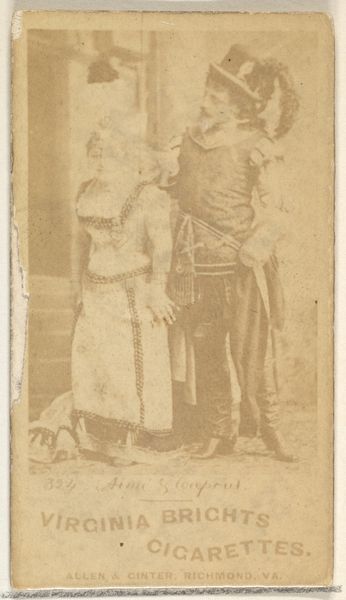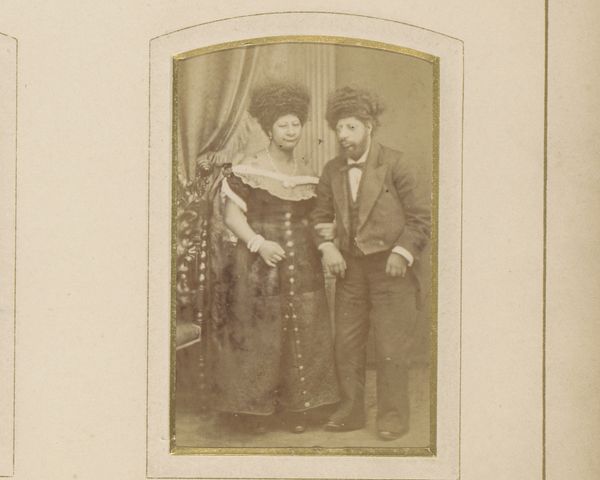
Portret van een man en een vrouw, staand en zittend voor een geschilderd achtergronddoek (scheepsdek) 1903
0:00
0:00
photography
#
portrait
#
photography
#
group-portraits
#
genre-painting
#
realism
Dimensions: height 87 mm, width 67 mm
Copyright: Rijks Museum: Open Domain
Editor: We're looking at a photograph titled "Portrait of a Man and a Woman, Standing and Sitting in Front of a Painted Backdrop (Ship's Deck)" from 1903, by G.W. Stevens. It feels staged but somehow also intimate. What jumps out at you? Curator: The constructed nature is precisely what interests me. This isn't just a portrait; it's a record of labor, of the photographic process itself. The painted backdrop, the deliberate poses, they all point to the mechanics of image-making in the early 20th century. Who produced this backdrop, and at what cost? It implies a whole industry serving the desires of the middle class for manufactured experiences and the status display that early photography offered. Editor: So you're seeing it less as a genuine depiction and more as… a commodity? Curator: Exactly. Consider the clothing – the materials, the tailoring. These speak to social class and aspiration. The woman’s elaborate hat, the man’s suit, they aren’t just aesthetic choices, they are a display of capital, reproduced and circulated through this photographic technology. We must analyze the materials of image creation and presentation themselves, in relation to wealth and labor, as an early form of social media. Editor: That’s a completely different way of seeing it! I was so focused on their expressions, I completely missed that aspect. Curator: The expressions, too, are part of that production! What did it cost the couple to be recorded and represented in such a way? What compromises in time, materials, or emotional expectation went into this photograph as an object? The photograph isn’t just *of* them; it’s *made* by economic and social forces. It prompts more questions about production and consumerism than about their personal identities. Editor: I never thought about it that way. Thinking about the economics behind the image definitely gives me a fresh perspective on early photography. Thanks! Curator: Indeed. Examining art through a material lens illuminates hidden power dynamics embedded within even seemingly simple images.
Comments
No comments
Be the first to comment and join the conversation on the ultimate creative platform.
